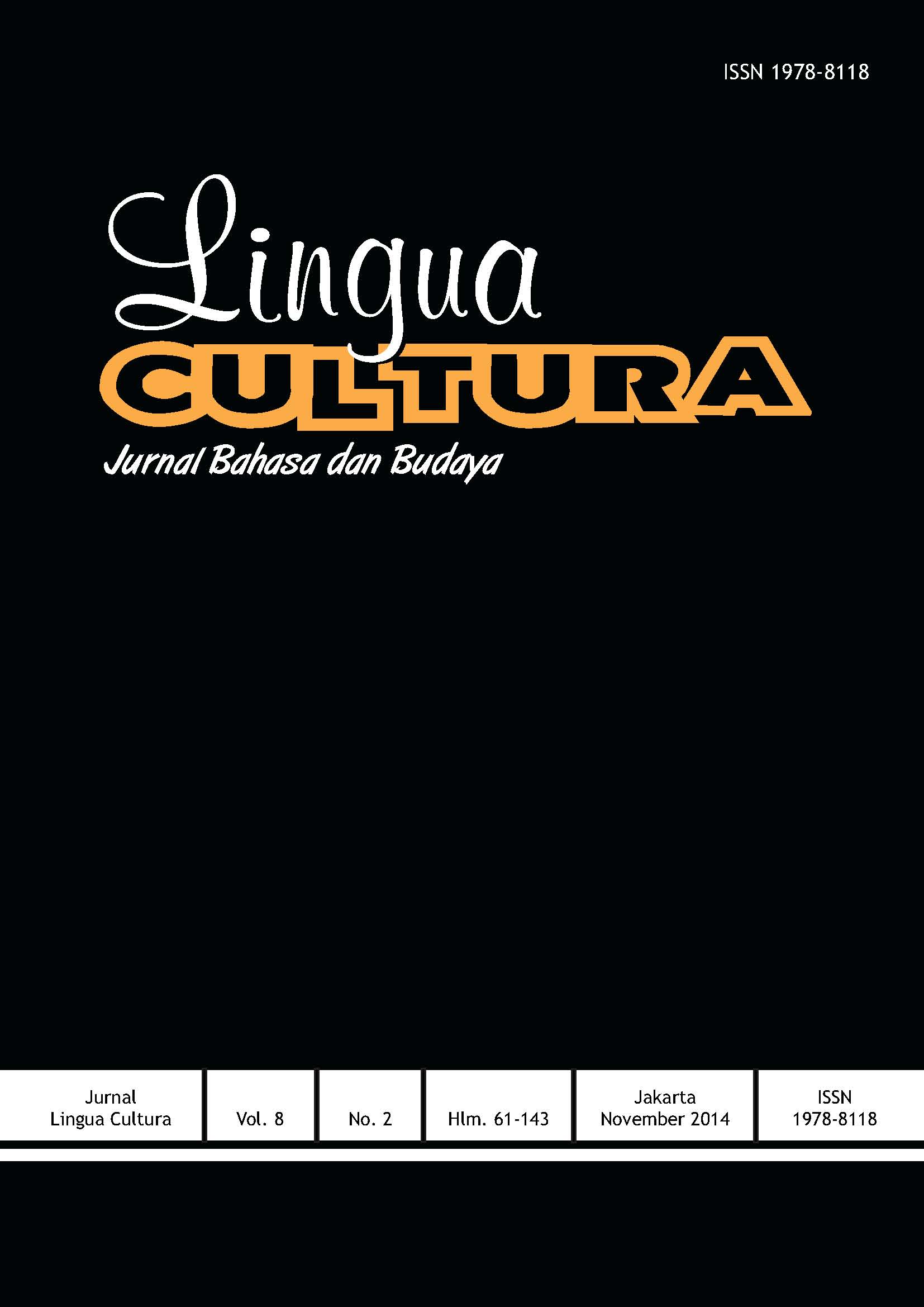Fenomena Muenshakai sebagai Akibat Pola Hidup Individualisme serta Dampaknya terhadap Keadaan Sosial dan Ekonomi di Jepang
DOI:
https://doi.org/10.21512/lc.v8i2.451Keywords:
muenshakai, family, individualismAbstract
Article described capitalist social life of modern Japanesse that was having individualistic characteristic. This high indivialistic life affected the availability of disconnected family life called muenshakai (ç„¡ç¸ç¤¾ä¼š). This phenomenon caused social and economic shifts in the Japanese family. This research used qualitative approach elaborated in descriptive analysis. The object of research or data corpus was the problem of a decline in Japan population in terms of the breakdown of the family. The research results indicated that muenshakai phenomenon has emerged in Japan caused by some sequential events, those are: the 2nd World War “legacyâ€, the availability of baby boom, the abolition of shÅ«shinkoyÅ (終身雇用), the decreasing of marital rate, the increasing of divorce rate, the decreasing of bith rate (å°‘å化), and the lost of family relationship. It can be concluded that the urban individualistic life style is able to change the traditional thinking pattern into oportunistic one that becomes one of the causal factors of muenshakai phenomenon.References
Abegglen, J. C. (2004). Shin-Nihon no Keiei (新・日本ã®çµŒå–¶). YÅichi Yamaoka (山岡洋一) (Trans.). Japan: Nipponkeizaishinbunsha (日本経済新èžç¤¾).
AnzÅ, S. (September 2013). 「少å化å•é¡Œã‚’æ–¬ã‚‹â€•åŽŸå› ã¯ã€æœªå©šåŒ–・晩婚化・晩
産化ã«ã‚ã‚Šã€. Meiji.net – Meiji University, Japan. Diakses dari http://www.meiji.net/publicitydata/meijinet_images/2013/09/opinion09_birthrate.jpg
Barrett, D. P., & Shyu, L. N. (Eds.). (2000). China in the Anti-Japanese War, 1937-1945: Politics, Culture, and Society. New York, NY: Peter Lang.
Fukutake, T. (1989). The Japanese Social Structure: Its evolution in the modern century. R. P. Dore. (Trans), 2nd ed. Japan: University of TÅkyÅ Press.
Hane, M. (2001). Modern Japan: A Historical Survey. Westview Press.
Japan Eastday – 日本語 (2012, 27 Nov). 日本ã§æ·±åˆ»åŒ–ã™ã‚‹ã€Œç„¡ç¸ç¤¾ä¼šã€. Diakses dari http://jp.eastday.com/node2/home/xw/gjpl/userobject1ai72338.html
J-Cast News. (2011). Diakses dari http://www.j-cast.com/2011/06/30099968.html
Ministry of Health, Labour, and Welfare (2014). 人å£å‹•æ…‹çµ±è¨ˆç‰¹æ®Šå ±å‘Šãƒ»é›¢å©šã«é–¢ã™ã‚‹çµ±è¨ˆ. Diakses dari http://www.mhlw.go.jp/toukei/saikin/hw/jinkou/tokusyu/rikon10/01.html
Ministry of Internal Affairs and Communications (2011) (ç·å‹™çœ) http://www.soumu.go.jp/johotsusintokei/whitepaper/ja/h23/html/nc222220.html
Miyamoto, M. (2012). Wakamono ga Muenkasuru (若者ãŒç„¡ç¸åŒ–ã™ã‚‹ï¼ä»•äº‹ãƒ»ç¦ç¥‰ãƒ»ã‚³ãƒŸãƒ¥ãƒ‹ãƒ†ã‚£ã§ã¤ãªã). Japan: Chikuma Shinsho (ã¡ãã¾æ–°æ›¸).
Nakane, C. (1981). Masyarakat Jepang. Bambang Kusriyanto (Trans.). Jakarta: Sinar Harapan.
Naohiro, Y. (2009). RÅdÅsijyÅkaikaku no Keizaigaku (労åƒå¸‚å ´æ”¹é©ã®çµŒæ¸ˆå¦). Japan: TÅyÅkeizaisinpÅsha (æ±æ´‹çµŒæ¸ˆæ–°å ±ç¤¾).
NIRA – National Institute for Research Advancement (2009, Apr). Diakses 5 Januari 2014 dari http://www.nira.or.jp/pdf/0901areport.pdf
NTT Com research (2014). 団塊ã®ä¸–代ã®ã‚»ã‚«ãƒ³ãƒ‰ãƒ©ã‚¤ãƒ• http://research.nttcoms.com/database/data/000561/
NHK – Japan Broadcasting Corporation Online (日本放é€å”会) (2012-2013) http://www.nhk.or.jp/special/onair/100131.html http://www.nhk.or.jp/special/onair/100905.html
Perlman, D., & Peplau, L. A. (1984). Loneliness Research: A survey of empirical findings. In L.A. Peplau & S. Goldston (Eds.), Preventing the Harmful Consequences of Severe and Persistence Loneliness (pp. 13–46). US Goverment Printing: DDH Publication.
Sekiguchi, I. (1997). ShÅ«shinkoyÅsei (終身雇用制). Japan: BunshindÅ (æ–‡çœžå ‚).
Shukan Gendai (2014). 「è€å¾Œç ´ç”£ã€200万人ã®è¡æ’ƒç¬¬1部 普通ã®ã‚µãƒ©ãƒªãƒ¼ãƒžãƒ³ã€ã ã£ãŸç§ã¯ã€å®šå¹´ã‹ã‚‰ãŸã£ãŸ10å¹´ã§ç ´ç”£ã—㟠70éŽãŽã¦ã€é£Ÿã†ãƒ¢ãƒŽã«å›°ã‚‹ã¨ã¯. Diakses dari http://gendai.ismedia.jp/articles/-/40603
The Huffington Post. (2014, 29 Mar). 日本ã®6割ã®åœ°åŸŸãŒç„¡äººã«ï¼Ÿ 2050å¹´ã€æ—¥æœ¬ã®äººå£ã¯9700万人国交çœè©¦ç®—. Diakses dari http://www.huffingtonpost.jp/2014/03/29/population-of-japan_n_5053891.html
Ukeru, M. (2012). SengÅshi no ShÅtai (戦後å²ã®æ£ä½“). Japan : SÅgensha (創元社).
Downloads
Published
How to Cite
Issue
Section
License
Authors who publish with this journal agree to the following terms:
a. Authors retain copyright and grant the journal right of first publication with the work simultaneously licensed under a Creative Commons Attribution License - Share Alike that allows others to share the work with an acknowledgment of the work's authorship and initial publication in this journal.
b. Authors are able to enter into separate, additional contractual arrangements for the non-exclusive distribution of the journal's published version of the work (e.g., post it to an institutional repository or publish it in a book), with an acknowledgment of its initial publication in this journal.
c. Authors are permitted and encouraged to post their work online (e.g., in institutional repositories or on their website) prior to and during the submission process, as it can lead to productive exchanges, as well as earlier and greater citation of published work.
USER RIGHTS
All articles published Open Access will be immediately and permanently free for everyone to read and download. We are continuously working with our author communities to select the best choice of license options, currently being defined for this journal as follows: Creative Commons Attribution-Share Alike (CC BY-SA)


















